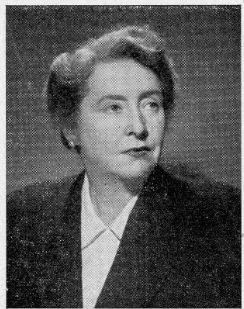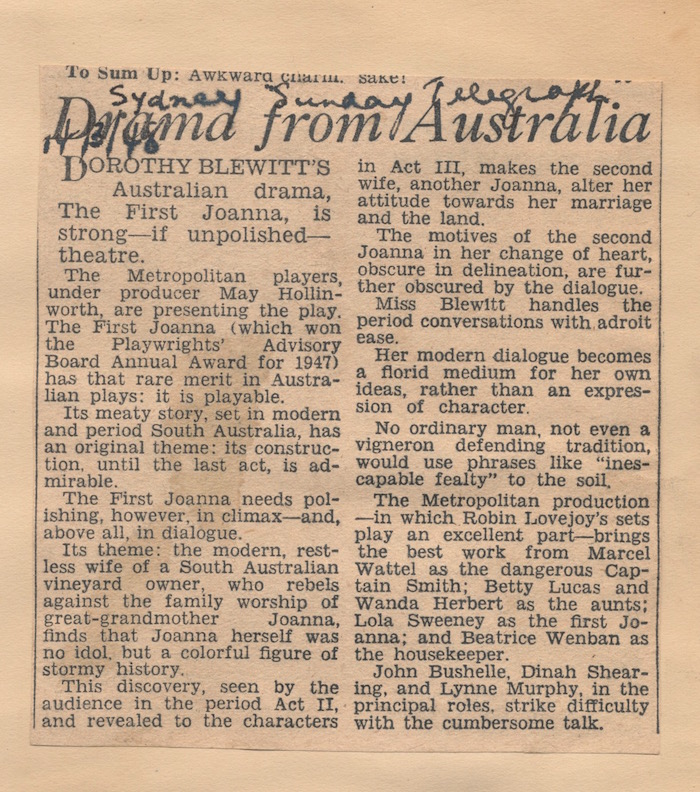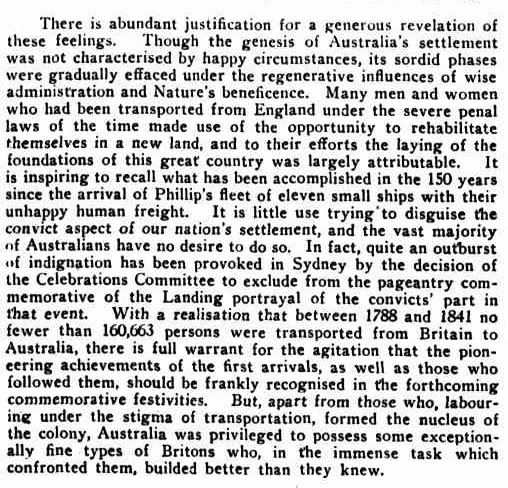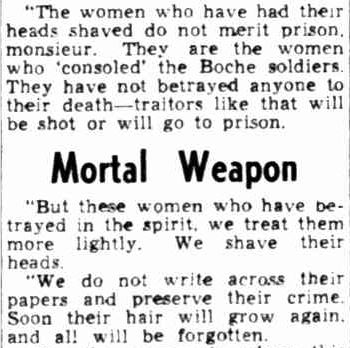AustLit
-
Dorothy Blewett was born in Northcote in 1898 and was educated at the Methodist Ladies College. She was a novelist, playwright, short story writer, and active promoter of Australian literature through her work with International PEN, as a literary agent, and as secretary of the London-based, Society of Australian Writers in the 1950s. (Dorothy Blewett, AustLit (www.austlit.edu.au), St Lucia: The University of Queensland, 2002-)
-
 Cover of Perth Repertory Program, 1948See full AustLit entry
Cover of Perth Repertory Program, 1948See full AustLit entryIn The First Joanna Dorothy Blewett explores Australia's acceptance of its convict heritage, tracing the fictional history of the Deverons, owners of a leading South Australian vineyard. The property, situated near the Onkaparinga River, was established in the early years of the colony by settler Stephen Deveron. The central characters of the play are the Joanna Millay, a young convict woman who becomes the matriarch of the Deverons, and Joanna Deveron, the wife of the second Stephen Deveron - the grandson of the first Joanna and the first Stephen Deveron.
(...more) -
Variations across the existing manuscripts of Dorothy Blewett's play The First Joanna show the play was heavily edited in response to reviews and world events. The final manuscript shows significant plot and character changes from the earlier versions. The earlier versions were written while Blewett was living in Melbourne during the 1940s; the later versions were revised when she was living in London during the 1950s. During this time, the character of the second Joanna undergoes significant development.
-
The First Joanna originally had a three-act structure. The annual play competition, run by Playwrights' Advisory Board (PAB), was for three-act, 'full length' plays. The First Joanna won the PAB competition in December 1947. The three-act structure remained until Blewett moved to the UK in 1950. While living in London, Blewett promoted The First Joanna heavily, and Maxwell Wray purchased the UK performance rights. No evidence has been found to suggest that it was performed in the UK. A letter to Blewett from London Film Productions indicates producers believed that audiences outside of Australia wouldn’t be interested in 'a subject with an Australian background' (Cunningham 1953). The manuscript shows significant changes and development in response to reviews, readings, political events, and Blewett’s own travels overseas. Reviews of the play when it opened in 1948 criticised the third act as too melodramatic and the revisions indicate Blewett took this into account. By the time Blewett returned to Melbourne, the play had been reduced to two acts and increased in length, the plot had been heavily revised to portray a more sympathetic view of post-war Europe, and the characterisation of the second Joanna had developed sympathy, depth, and a detailed back story.
-
The list of characters varies in response to the plot changes. In the first three versions of The First Joanna, there is a cast list of 24 characters. The final manuscript has a reduced cast of 21. The three deleted parts are Mrs Mattie van Druyten (Halley's mother), Mrs Swinnerton, and Colonel Swinnerton. These three characters become extraneous to the plot as it evolves, develops complexity, and the ending is changed.
-
The First Joanna received mixed reviews. A reviewer from the Sydney Sunday Telegraph called The First Joanna a 'meaty story ...with an original theme,' but went on to say that the play needed 'polishing ... in climax and, above all in dialogue', further adding that, 'the motives of the second Joanna in her change of heart, obscure in delineation are further obscured by the dialogue' ( 'Drama from Australia').
-
The earliest version of The First Joanna is set in 1939, just prior to the outbreak of the Second World War. It must have been written between 1940 and 1943; a PAB reading was held on the 23rd of October 1943. The First Joanna shows Blewett's willingness to unflinchingly confront uncomfortable issues. The central theme of The First Joanna is historical revisionism. Blewett also tackles the treatment of women both in Australian culture, and in Europe during and after the Second World War.
-
Historical Revisionism
The Australian sesquicentennial celebrations in 1938 had been controversial because of the omission of both Indigenous people and convicts from the celebrations (Smith 33). This theme of historical revisionism is picked up in The First Joanna, which features the story of Deveron Family, who are unaware that the much-venerated matriarch was originally a convict. The play was written in the early 40s just after the 1938 celebration of the sesquicentenary of settlement 'with the excellent intention of making Australians aware of their traditions.' (The Bulletin 17/03/1948). The exclusion of convicts and Indigenous people from the various re-enactments and celebrations caused a controversy. See for example, the image on the right, from an article in The Queensland Times 3rd January, 1938, .
-
Treatment of Women 'Collaborators'
As this newspaper report from The Adelaide News dated 19 January 1945 shows, British and American troops were shocked by the treatment of women who were accused of collaboration by providing sexual favours to German soldiers during the occupation of France. It is only in versions three and four that WW2 and the second Joanna's trauma becomes a central theme of the play.The second Joanna is the character that undergoes the most significant revision and development. In versions three and four, she has survived the war but been punished for being a ‘collaborator’ and as a result, she has had her hair shaved off. As these versions of the play were written and revised during Blewett's time in post-war London, it is likely she heard stories or media reports of this treatment of women prisoners of war.
You might be interested in...







